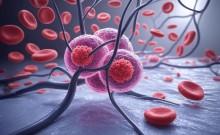
In a new study, researchers have discovered that life in the nascent stages of Earth was made possible by meteorite strikes carrying the crucial life creating factor 'phosphorus'.
Researchers at University of South Florida (USF) and University of Washington in a joint study have indicated that the meteor struck 3.5 billion years ago, leading to the creation of early life when phosphorus from the meteors reacted with water.
According to astrobiologists, these meteor strikes can be dated to the Hadean and Archean eons - the first of the four principal eons in the earliest history of Earth.
"Meteorite phosphorus may have been a fuel that provided the energy and phosphorus necessary for the onset of life," said Matthew Pasek, USF Assistant Professor of Geology.
"If this meteoritic phosphorus is added to simple organic compounds, it can generate phosphorus bio-molecules identical to those seen in life today."
He added, "The present research shows that ...Phosphorus chemistry on the early Earth was substantially different billions of years ago than it is today."
This further explains the rationale behind as to why newer forms of life do not originate in the present conditions of Earth.
And also the fact that limited natural sources of phosphate present in Earth could not have catered to the huge quantities of phosphate reqired for creating life when dissolved in the ocean waters.
For the study, scientists examined samples from Australia, Zimbabwe, West Virginia and Florida.
"The importance of this finding is that it provides the missing ingredient in the origin-of-life recipe: a form of phosphorus that can be readily incorporated into essential biological molecules like nucleic acids and cell-membrane lipids," said Roger Buick, co-author of the paper.
The study was published in the Proceedings of the National Academy of Sciences.

















